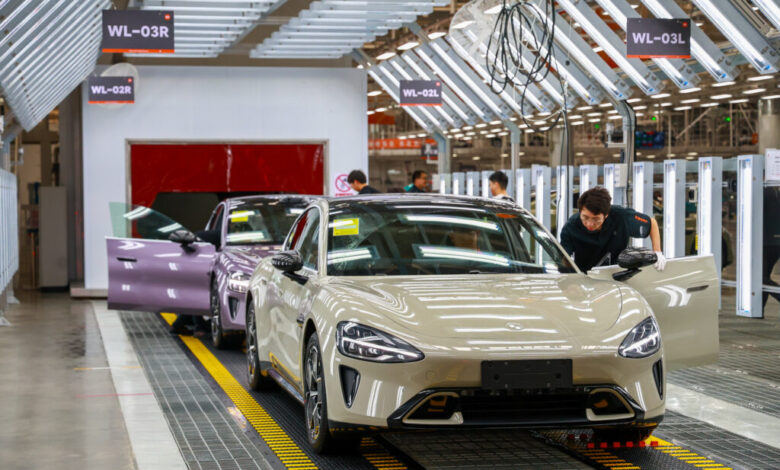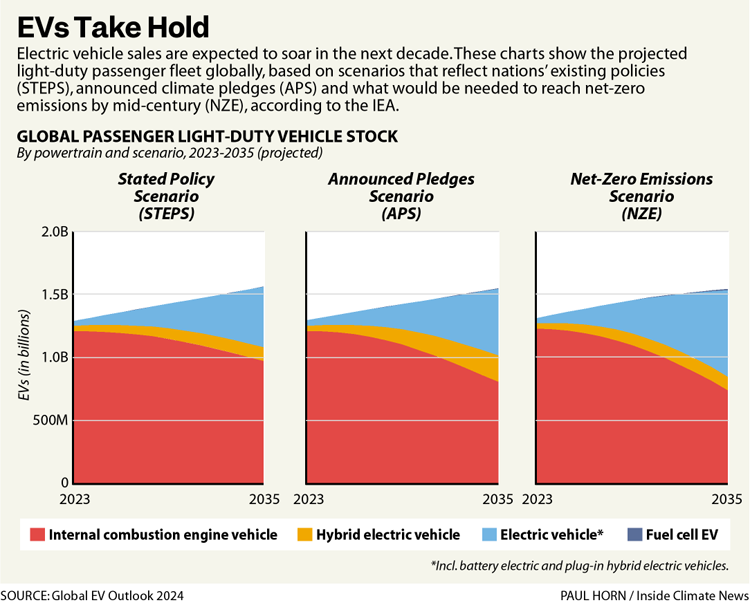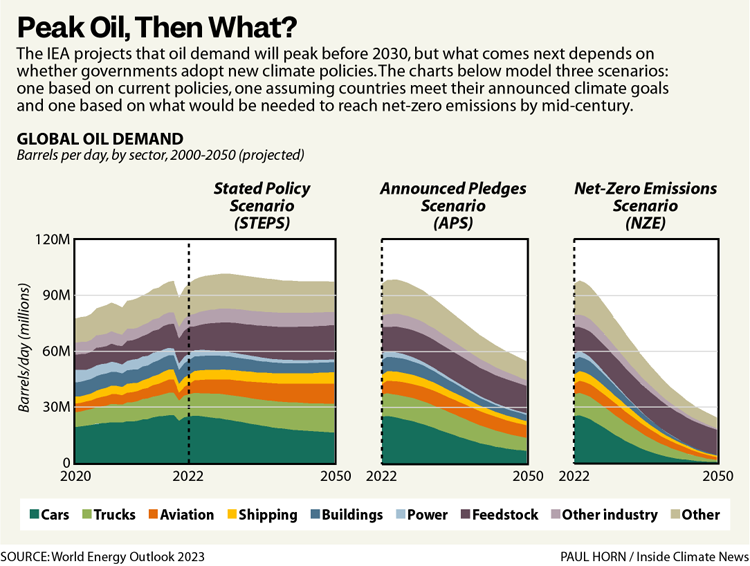EV Sales Are Taking Off. Why Is Oil Demand Still Climbing?

This year is likely to bring two seemingly incongruous milestones. Sales of electric vehicles will hit an all-time high, and so will global oil consumption. It is as if the transition away from fossil fuels is moving faster than ever while barely gaining ground.
In fact, experts say, adoption of electric vehicles, or EVs, is accelerating more quickly than many people expected, despite some recent setbacks. Government subsidies and mandates in China, the United States and Europe have begun noticeably shifting sales of new cars, trucks and buses. Last year, nearly one in five new cars sold in the world was electric, according to the International Energy Agency, or IEA.
Yet oil demand has continued to climb nonetheless and now sits around 100 million barrels per day, underscoring how difficult it will be to shift the world’s engines away from fossil fuels fast enough to avoid more extreme climate warming.
“Under current policies, EVs are not an existential threat to global oil demand, not even close,” said Daniel Raimi, a fellow at Resources for the Future, an environment and energy research institute. “If we’re going to achieve our long-term climate goals we need additional public policies and technological innovation to get us where we need to go.”
Oil demand has grown faster than expected over the last couple of years, according to the IEA, and is now slightly higher than it was before the COVID-19 pandemic hit. And while the agency expects demand will peak before the end of the decade, oil consumption could remain strong for decades without new subsidies or mandates for electric vehicles.
The IEA’s “Stated Policies Scenario,” which aims to model what would happen under national policies that have already been adopted, foresees oil consumption declining only 3 percent by 2050.
But many experts say the IEA’s modeling fails to capture how quickly the world is changing. The Stated Policies Scenario, for example, is already out of date: It did not include the emissions rules for cars and trucks adopted by the Biden administration in March. Those rules are expected to speed adoption of electric and plug-in hybrid vehicles, which made up about 9 percent of new car sales last year, according to Wards Intelligence. EVs and plug-in hybrids are now expected to cut gasoline and diesel consumption by the equivalent of 2.7 million barrels per day by 2050, or about 14 percent of U.S. oil consumption, according to the Environmental Protection Agency.
China, the global leader in electric vehicle sales, hit its 2025 target three years early. Last year, 37 percent of new cars sold in that country were electric, according to Raymond James, a financial firm.
“That is an amazing number,” said Pavel Molchanov, managing director of renewable energy and clean technology at Raymond James. “Ten years ago it was practically zero.”
This year, that figure could climb to 45 percent of new car sales in China, according to the IEA.


A report last year by RMI, an energy research institute, said these accelerating adoption rates are a better predictor of the future. Falling battery costs, increased policy support and shifting consumer attitudes could mean that electric vehicles will account for more than 60 percent of new vehicle sales globally by 2030, the report argued.
This more rapid adoption would mean that oil demand could start falling faster than current policies would suggest. The IEA has developed a separate modeling scenario based on countries’ broader climate and net-zero targets, independent of whether they are backed yet by specific policies, and determined that oil consumption would fall by nearly 8 percent by 2030 if nations were to meet these goals. By 2050, oil demand would be cut nearly in half.
That shift is not a foregone conclusion. Some oil companies have remained bullish on demand for their core product, and continue to resist policies that would speed adoption of electric vehicles.
The American Petroleum Institute declined to make anyone available for an interview for this article, but spokesperson Scott Lauermann pointed to modeling by the U.S. Energy Information Administration that shows global demand for gasoline declining only slightly over the next decade before climbing again. The administration’s modeling projects that global population growth will lead to higher energy demand, and it assumes electric vehicles sales will grow slowly, accounting for between 29 percent and 54 percent of new vehicle sales by 2050.


At a March energy industry conference in Houston, Amin Nasser, the chief executive of Saudi Aramco, the Saudi Arabian oil company, dismissed talk of a rapid energy transition, saying “We should abandon the fantasy of phasing out oil and gas.”
An investigation last year by the Center for Climate Reporting, a nonprofit news organization, revealed that Saudi Aramco was investing in several initiatives to support long-term oil demand, including the development of cheap, combustion-engine cars to compete with electric vehicles in developing nations.
Yet many oil giants are beginning to hedge their bets, Molchanov said. Some European companies have made significant investments in electric vehicle charging networks. American oil companies generally have not invested in charging, but ExxonMobil has made a small investment in mining for lithium, a key component in batteries.
“They would not be doing it if they did not see an opportunity in EVs,” Molchanov said.
The IEA’s modeling points to another challenge to phasing out oil: Cars, trucks and buses account for only about 45 percent of demand. Petrochemicals, air travel and shipping consume much of the rest, and demand in those sectors is still growing.
“I don’t think people understand quite how embedded petrochemicals are to every aspect of modern life,” Raimi said, “and that’s not going to go away anytime soon, even under the most ambitious climate scenarios.”
This story is funded by readers like you.
Our nonprofit newsroom provides award-winning climate coverage free of charge and advertising. We rely on donations from readers like you to keep going. Please donate now to support our work.
It’s important to remember, Raimi said, that modeling is especially difficult when technologies and markets are changing quickly, as they are now with electric vehicles.
The IEA scenarios, for example, only take into account the policies or pledges that governments have already announced or adopted. With each new climate pledge or policy, those scenarios become out of date.
“It’s very unlikely policy is going to stand still,” said Anand Gopal, executive director of policy research at Energy Innovation, a climate and energy think tank. Even current trends, he said, should be enough to unsettle oil companies. What once seemed like an ever-growing market is going to start shrinking soon.
Gopal said disruptive change like the transition to electric vehicles tends to happen exponentially. While it may be hard to see the effects today, he said, “once the transition really takes hold, the decline will be faster than people think.”





